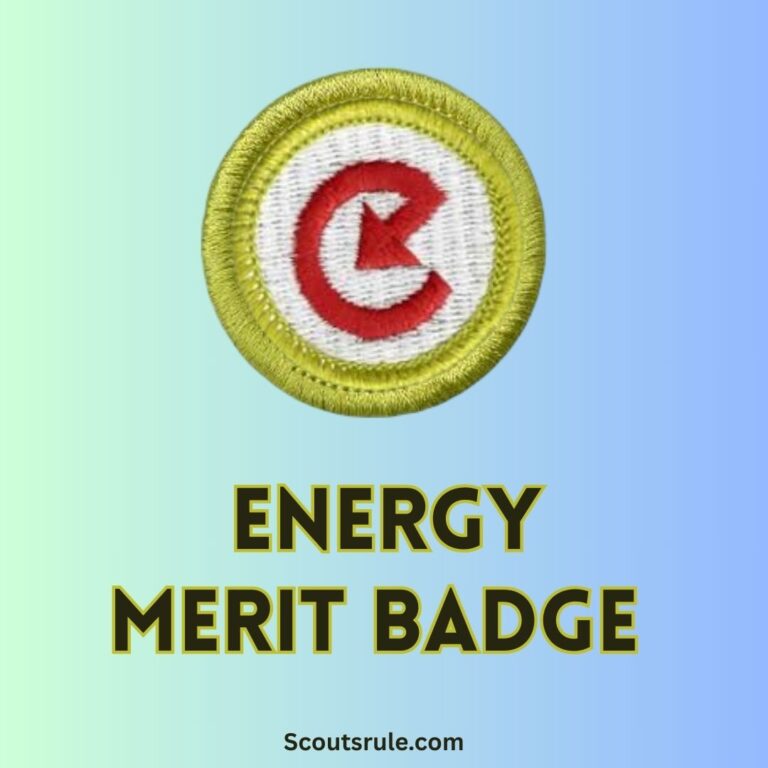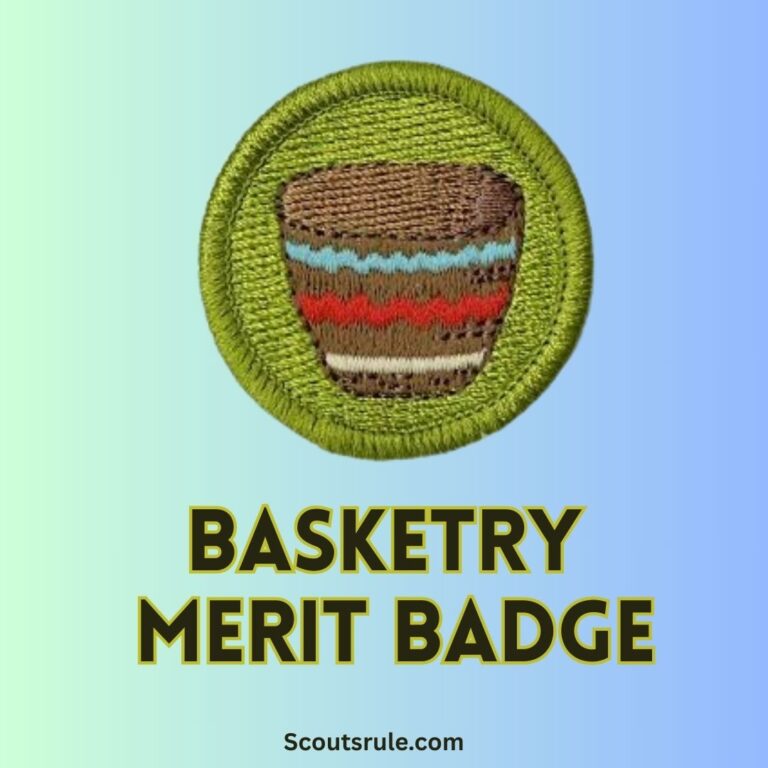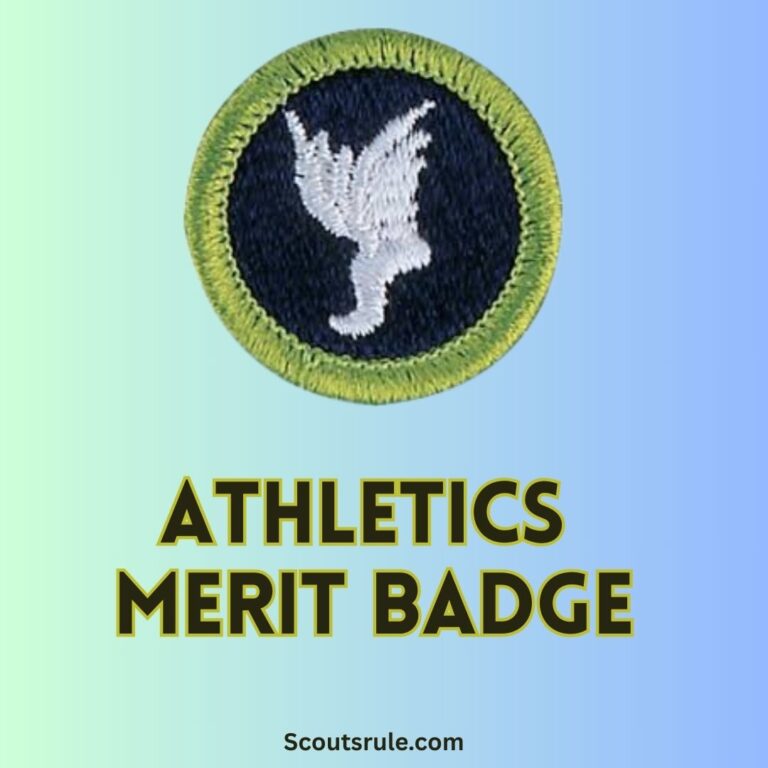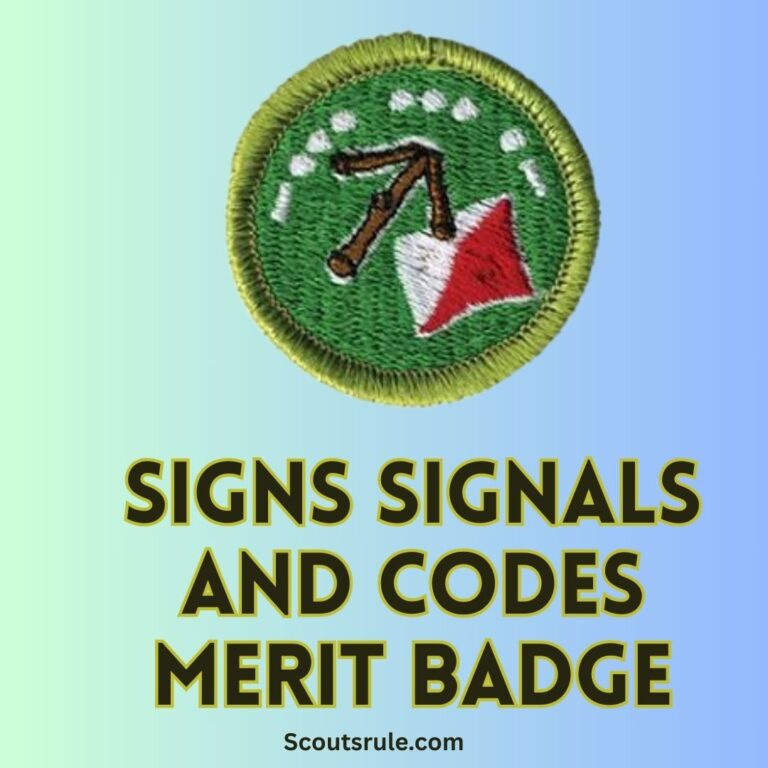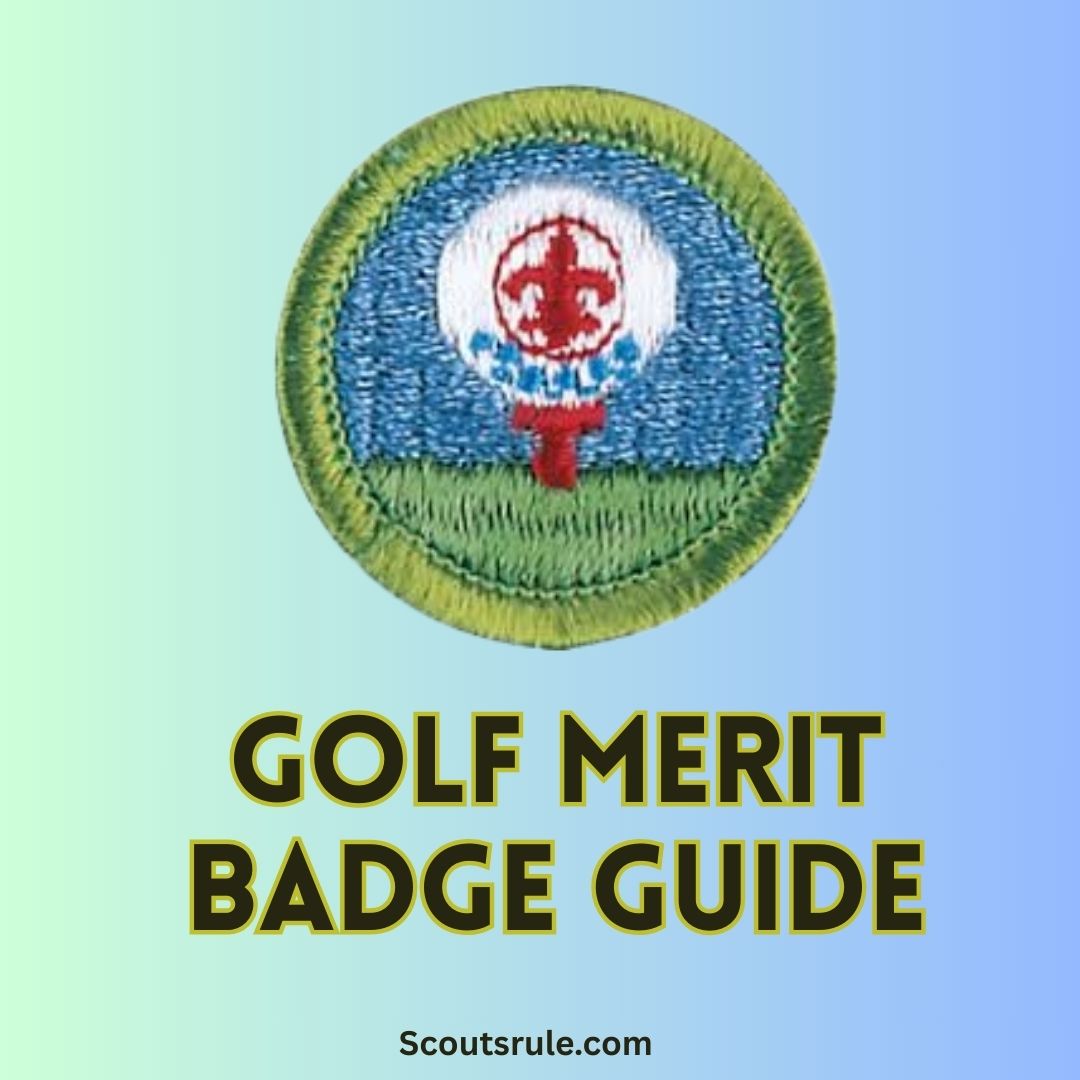
This guide will help you understand every facet of the badge—from safety and first-aid considerations through to learning about the rules of golf, its history, techniques, and even vocational opportunities. Whether you are new to the game or have some experience on the course, this guide will provide you with detailed information and practical ideas to help you succeed while embracing the spirit, discipline, and etiquette of golf.
Post Contents
- Introduction: The Value of Golf
- 2. Understanding the Game of Golf
- 3. Overview of the Golf Merit Badge Requirements
- 4. Safety on the Golf Course
- 5. The Rules of Golf and Etiquette
- 6. History of Golf and Its Evolution in the U.S.
- 7. Golf Techniques and Skills
- 8. Golf and a Healthy Lifestyle
- 9. Vocational Opportunities in Golf
- Conclusion: Embracing the Spirit of Golf
Introduction: The Value of Golf
Golf is a sport that elegantly combines precision, discipline, and strategy. It is not only a physical challenge but also builds mental toughness and social etiquette. The game must be played with respect—for the course, for your fellow competitors, and for the rules that govern the sport. Earning the Golf Merit Badge is an opportunity to explore all aspects of the game: from learning fundamental techniques to gaining an understanding of the rich history behind golf, and even recognizing the broader social and economic impact of the sport. In doing so, you develop a sense of responsibility and respect, qualities that lie at the heart of Scouting.
Golf is often described as a “gentleman’s game” because of the emphasis on sportsmanship and fair play. The discipline required to master its techniques is substantial; few sports require as much precision in terms of both physical coordination and mental focus. Whether your goal is to play competitively, enjoy a leisurely round with friends, or simply learn more about a popular recreational activity, the journey that begins with the Golf Merit Badge is one that builds valuable lifelong skills.
2. Understanding the Game of Golf
Before diving into the specific requirements of the Golf Merit Badge, it is important to appreciate what golf is and why it continues to be a widely respected sport.
A Brief History of Golf
The game of golf has a storied past that dates back over 500 years. Originating in Scotland, golf evolved from simple stick-and-ball games played on the natural landscape into the highly organized sport we know today. Early enthusiasts played on linksland—coastal sandy areas where natural hazards such as dunes and wind added to the challenge. Over time, the rules were formalized, with clubs such as The Royal and Ancient Golf Club of St Andrews codifying the standards of play, which eventually spread across the world.
Golf’s journey from a leisurely pastime to a professional sport is marked by innovations that include the standardization of clubs and balls, the invention of scoring systems, and the emergence of tournaments that capture global attention. These milestones inform current practices and inspire today’s players to honor tradition while embracing innovation.
The Role and Impact of Golf in Society
Golf contributes much more than recreation on a well-manicured course. It provides an environment for networking, relaxation, and professional development. Many business deals have been initiated on the fairway or during post-round lunches at the clubhouse. Moreover, golf courses are often seen as social hubs that accommodate community events, charity fundraisers, and corporate outings.
The sport also has a significant economic impact. Golf courses create employment opportunities, drive tourism, and yield partnerships between communities and private enterprises. Given these wide-ranging benefits, understanding golf extends beyond learning to play—it also becomes a window into understanding regional culture, business practices, and even urban planning. (See and 2 for additional insights into golf’s evolution and economic impact.)
3. Overview of the Golf Merit Badge Requirements
The Golf Merit Badge is designed to teach you about safety, rules, techniques, and historical as well as career aspects of the game of golf. While requirements may evolve over time, they generally include the following key components:
- Safety on the Golf Course: Learn first aid for common golfing injuries (e.g., heat reactions, dehydration, blisters, sprains, strains) and ways to manage the hazards present on a golf course.
- The Rules of Golf and Etiquette: Study the USGA Rules of Golf, learn key definitions and golf terms, and demonstrate your understanding of golf etiquette and the Rules of Amateur Status.
- Understanding the World Handicap System: Explain the basics of how the handicap system works and why it is important for maintaining fair competition.
- History of Golf: Explore the origins of golf, its early years in the United States, and the accomplishments of a top golfer of your choice.
- Vocational Opportunities in Golf: Consider the career paths related to golf, including jobs in instruction, course management, equipment manufacturing, and more.
- Golf’s Contribution to a Healthy Lifestyle: Learn and present how the sport can enhance both mental and physical well-being, and create an exercise plan that would benefit a golfer.
- Golf Techniques: Demonstrate golf fundamentals such as grip, stance, posture, and a variety of shots—from a full wood shot played from a tee to approaches, chip-and-run shots, and handling recovery in difficult conditions.
- Rules, Etiquette, and Respect in Golf: Reflect on the values that the sport instills, including honesty, sportsmanship, and respect for fellow players.
Each of these sections not only teaches you about the game but also instills discipline, self-improvement, and community values that go well beyond the golf course.
4. Safety on the Golf Course
Golf is played on expansive, often unpredictable outdoor courses where environmental and physical hazards can arise. Safety, therefore, is paramount to ensure that everyone enjoys the game without risk.
Common Hazards and First-Aid Procedures
Environmental Hazards:
- Weather Conditions: Golfers must be aware of potential sunburn, dehydration, or heat-related illnesses. Ensure you understand basic first aid measures for managing hot conditions, such as taking breaks, drinking plenty of water, and using sun-protective clothing.
- Uneven Terrain: Golf courses can sometimes have uneven grass or hidden obstacles. Always be cautious when walking between holes, especially on hilly courses or wet conditions that increase the risk of slips.
Physical Injuries:
- Blisters and Foot Pain: Extended walking on the course can lead to blisters; choose appropriate footwear and, if necessary, use blister pads.
- Muscle Strains: Carrying a heavy bag of clubs for extended periods may strain muscles. Learn proper techniques for lifting and walking with your equipment.
- Sprains and Strains: Overextension during a swing can lead to muscle strain. Warm up properly before playing and take care to maintain flexibility.
First-Aid Measures:
- Heat Reactions: If you or a friend shows signs of heat exhaustion, move to the shade, hydrate immediately, and, if necessary, apply cool compresses.
- Minor Injuries: Ensure you know how to clean cuts and bruises, and apply bandages or other first aid as needed.
- Emergency Contacts: Always carry a cell phone or have a plan in place in case of emergencies, such as a nearby golf cart with first-aid supplies or an on-call staff member for the course.
Discuss these safety protocols with your counselor, and if possible, include a simple demonstration of handling a common minor injury. Proper safety not only protects you but also instills the responsibility and readiness that define the spirit of Scouting.
5. The Rules of Golf and Etiquette
Golf is as much about playing by the rules and demonstrating sportsmanship as it is about skill. The USGA Rules of Golf form the backbone of the sport, and understanding these rules is essential.
USGA Rules and Golf Terms
- Rules of Golf: Familiarize yourself with the rules as established by the United States Golf Association (USGA). These detail how the game should be played, how strokes are counted, and what constitutes a penalty. They are designed to maintain fairness and consistency in play.
- Key Terms: Understand the differences between terms such as “bogey,” “par,” “birdie,” and “eagle.” Learning these definitions not only helps you follow the game but also enables you to articulate what these terms mean in your discussions with your counselor.
- Rules of Amateur Status: Discuss what makes a golfer an amateur as opposed to a professional. This typically involves regulations around acceptable earnings and conduct both on and off the course.
It is crucial to practice by reading or watching explanatory videos on the USGA website or other trusted resources (). Some counselors might also require you to participate in a Q&A session to ensure you have a thorough understanding of these rules.
Golf Etiquette
Golf etiquette is a serious part of the game that focuses on respect for your fellow players, the course, and the traditions of the sport. Some examples include:
- Maintaining Silence: Remain quiet while others are taking a shot to ensure they can concentrate.
- Pace of Play: Keep the game moving by being ready when it’s your turn.
- Course Preservation: Replace divots, smooth out bunkers after play, and repair ball marks on the greens.
- Dress Code and Behavior: Adhere to any attire standards set by the course and maintain respectful behavior during the game.
Discuss with your counselor not only what the rules are but why they exist—to promote courtesy and ensure that the game is enjoyable for everyone involved.
6. History of Golf and Its Evolution in the U.S.
Golf has a rich history that began in Scotland and evolved into a global sport. Understanding the history of golf offers context for its current practices and fuels a greater appreciation of the game.
Early History
- The Scottish Origins: Golf originated on the rough, windswept links of Scotland, where early players developed a game that relied on natural landscapes and required immense skill to master.
- Evolution of the Rules: Over time, formal rules were devised to standardize the game. Clubs like The Royal and Ancient Golf Club of St Andrews played a pivotal role in shaping these guidelines.
Golf in the United States
- Early Years: Golf was introduced to the United States in the late 19th century. Early courses were built on natural landscapes, and the sport quickly gained popularity among a broad cross-section of society.
- Growth and Organization: The establishment of national golf associations and the development of professional tournaments helped formalize the sport. Major tournaments eventually emerged, inspiring generations of golfers.
- Notable Golfers: Choose a top golfer—such as Jack Nicklaus, Tiger Woods, or Ben Hogan—and discuss their contributions to the game. Focus on how their skills, dedication, and perseverance have promoted longevity and competitiveness in golf.
This historical perspective not only enriches your understanding but also highlights the evolution of cultural values within the sport.
7. Golf Techniques and Skills
Mastering the fundamental techniques of golf is at the heart of the merit badge requirements. This involves everything from the proper grip and stance to the full swing and specialized shots.
The Fundamentals of a Good Swing
- Grip and Stance: A proper grip is critical for controlling the club. Whether you employ an interlocking, overlapping, or 10-finger grip, consistency is key. Your stance should be balanced, with your feet shoulder-width apart, knees slightly bent, and weight evenly distributed.
- Posture and Alignment: Maintain a posture that allows a full range of motion. Good alignment ensures that your body and club are directed towards the target. This often means positioning your shoulders, hips, and feet correctly.
- The Swing: The golf swing can be broken into phases—address, backswing, downswing, impact, and follow-through. Each phase is interconnected.
- Backswing: Should be smooth and controlled, building tension without twisting too far.
- Downswing and Impact: Focus on transferring energy from your body through the club and into the ball, ensuring you hit it with the center of the clubface.
- Follow-Through: A balanced finish not only increases accuracy but also helps you avoid injury.
Different Types of Shots
- Full Wood Shot from a Tee: Practice the technique for a full swing that propels the ball over long distances. Emphasize a solid release and consistent follow-through.
- Fairway Wood and Long Iron Shots: Practice swinging with slightly different stances or clubheads. These shots are typically aimed at achieving distance while maintaining loft and control.
- Short Iron and Approach Shots: Focus here is on precision and control. These shots are less about power and more about accuracy to land the ball on the green.
- Chip-and-Run and Pitch Shots: Developing a feel for shorter, softer shots around the green is important. Work on mastering your touch and judgment for distance.
Technique practice should be recorded and reviewed, and you may even use video analysis to refine your form. Your counselor might require you to demonstrate each shot type, so repeated practice is crucial.
8. Golf and a Healthy Lifestyle
Golf isn’t just a mental challenge—it has considerable physical benefits as well.
Physical Benefits
- Exercise: Walking an 18-hole golf course can equate to a significant amount of cardiovascular exercise. Carrying clubs or using a push cart further increases physical engagement.
- Improved Coordination and Balance: The golf swing requires the integration of the body’s core, arms, and legs. This dynamic motion improves overall balance and muscle coordination.
Mental Benefits
- Focus and Concentration: Golf demands intense concentration and strategic planning, which can sharpen your mind and improve decision-making.
- Stress Relief: Spending time outdoors on a well-kept course and engaging in a relaxing sport can reduce stress and promote mental well-being.
Golf Exercise Plan
Develop an exercise routine tailored to golfers that might include:
- Core Strengthening: Activities such as planks and abdominal exercises.
- Flexibility Work: Stretching routines that focus on improving the range of motion in the shoulders, hips, and ankles.
- Cardiovascular Activity: Walking, jogging, or swimming to build endurance.
Discuss with your counselor how incorporating these exercises supports not only your golf game but your overall health.
9. Vocational Opportunities in Golf
Beyond personal enrichment, the Golf Merit Badge encourages you to consider the professional side of the game. Golf supports a variety of career opportunities, including:
- Professional Golf Instructor: Teaching the fundamentals of golf, developing training programs, and mentoring young athletes.
- Golf Course Management: Managing day-to-day operations on a golf course, including maintenance, staff coordination, and customer service.
- Equipment Development and Sales: Working in the manufacturing and marketing of golf equipment such as clubs, balls, and accessories.
- Event and Tournament Management: Organizing regional or national golf tournaments, which integrate aspects of project management, sponsorship, and public relations.
- Sports Journalism in Golf: Covering tournaments, writing reviews, and analyzing player performance, which ties into communication skills and media literacy.
Research the education, training, and experiences related to these careers. Interviews or shadowing experiences with professionals in any of these fields provide practical insight and can be a compelling part of your merit badge portfolio.
Conclusion: Embracing the Spirit of Golf
The Golf Merit Badge embodies a holistic approach to learning that goes far beyond swinging a club. It challenges you to embrace safety techniques, master fundamental skills, understand the historical and economic impact of a sport that has united communities for centuries, and consider how golf contributes to overall health and well-being. By engaging with every requirement—from reviewing the USGA Rules and studying golf’s storied history to practicing precision strokes and exploring career options—you’re not only becoming a better golfer, but also a more disciplined, knowledgeable, and respectful individual.
Whether you dream of competitive play, envision a career connected to the sport, or simply wish to enjoy a relaxing round of golf with friends, the skills and lessons you acquire will enhance your experience on and off the course. As you work with your troop leaders, mentors, and family, remember the values of sportsmanship, perseverance, and integrity that are inherent in the game. Golf teaches us that every shot counts, and every setback is just an opportunity to improve.
May your time on the course bring you joy, challenge, and lifelong lessons. Embrace every aspect of golf as a pathway to personal growth and community connection, and always carry forward with the respect and passion befitting a dedicated Eagle Scout and a responsible citizen of the sporting world.
Happy golfing, and may your journey on the green inspire you for years to come!

Hi, Robin here, A former lead Scout and here I share my inspiring stories about USA Scouts, leadership, adventure, how to guides and more.

